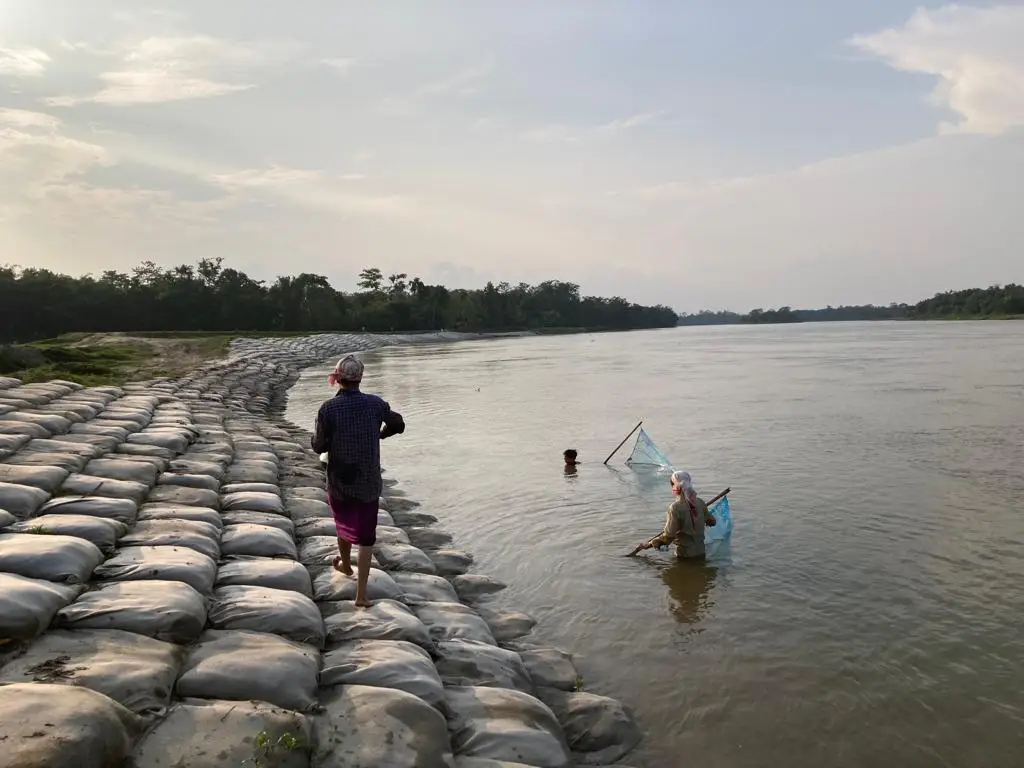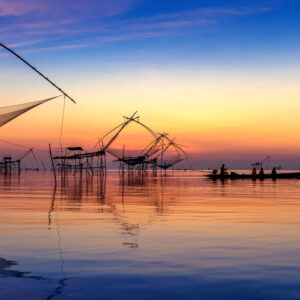Introduction
Majuli, the world’s largest river island, is at a pivotal moment in its history. Known for its deep cultural roots and breathtaking landscapes, Majuli is now facing severe environmental threats that could forever change the island’s future. As erosion continues to eat away at its landmass and unpredictable floods strike with increasing frequency, the island’s people are striving to protect their heritage and livelihoods.
Table of Contents
Majuli’s Ongoing Erosion Crisis
One of the most pressing issues Majuli faces is the relentless erosion caused by the mighty Brahmaputra River. The island, once spanning over 1,200 square kilometers, has now shrunk to less than 500 square kilometers. Erosion has not only taken away valuable agricultural lands but also displaced families, forcing them to migrate to safer areas. Despite government efforts to construct embankments, the pace of land loss is alarming【9†source】.
This erosion threatens to wipe out entire communities, along with Majuli’s rich Vaishnavite heritage. The island’s famed Sattras—monasteries that are cultural and religious hubs—have already relocated several times over the years due to land loss. These Sattras are not just religious centers but also guardians of Assamese classical dance, music, and drama【9†source】.
Increasing Floods and Climate Impact
In 2024, Majuli has been hit hard by unpredictable flash floods, worsened by the changing climate. Torrential rains in neighboring Arunachal Pradesh and Bhutan swell the Brahmaputra and its tributaries, causing floods that leave destruction in their wake. In the most recent flooding season, many parts of the island were submerged, leaving behind damaged crops, houses, and infrastructure【8†source】.
The local population, who have long adapted to seasonal floods, now face new challenges due to the intensity and unpredictability of the floods. Many villages are vulnerable, especially as the embankments struggle to hold up against the river’s powerful currents.
Wetland Decline and Ecological Loss
Majuli’s wetlands, once a sanctuary for migratory birds, are disappearing at an alarming rate. These wetlands not only supported diverse wildlife but also sustained local fishing communities. Shrinking wetlands have led to a decline in bird populations and fish stocks, directly impacting the livelihoods of the people who depend on these resources【9†source】.
The ecological degradation is compounded by human encroachment, as many wetlands have been converted into agricultural fields. Environmentalists and conservationists are calling for sustainable ecotourism initiatives to raise awareness and help protect Majuli’s remaining natural beauty, but the island’s fragile ecosystem makes such efforts challenging.
Cultural Significance and Preservation Efforts
Majuli is often referred to as the cultural capital of Assam. Its historical significance is rooted in the Vaishnavite movement spearheaded by Srimanta Sankardev in the 16th century. The island’s Sattras are guardians of Assamese culture, particularly in the arts of Bhaona (traditional drama) and Sattriya (classical dance). Preserving this cultural heritage is a priority for the people of Majuli, but it’s becoming increasingly difficult due to the ongoing environmental crises【9†source】.
Several organizations, along with the state government, are working to protect Majuli’s heritage by advocating for better flood management and erosion control. However, much more needs to be done to ensure that both the cultural and ecological landscapes of the island are preserved for future generations.
The Future of Majuli
Majuli’s future hangs in the balance as the island fights to protect its land, people, and culture from the ravages of nature. While efforts are underway to control erosion and improve infrastructure, the situation remains precarious. For Majuli to thrive, there must be a long-term commitment from both the government and environmental organizations to address these issues with sustainable solutions.
The island’s unique mix of culture, history, and nature makes it one of Assam’s most valuable treasures. As the world’s eyes turn to Majuli, it is imperative that every effort is made to protect this iconic island from further degradation.
Majuli stands as a testament to resilience, but without immediate action, it risks becoming a cautionary tale of environmental and cultural loss.
Keywords: Majuli, erosion, floods, Brahmaputra River, cultural heritage, Sattras, Vaishnavism, environmental conservation, Assam, migratory birds, wetlands




